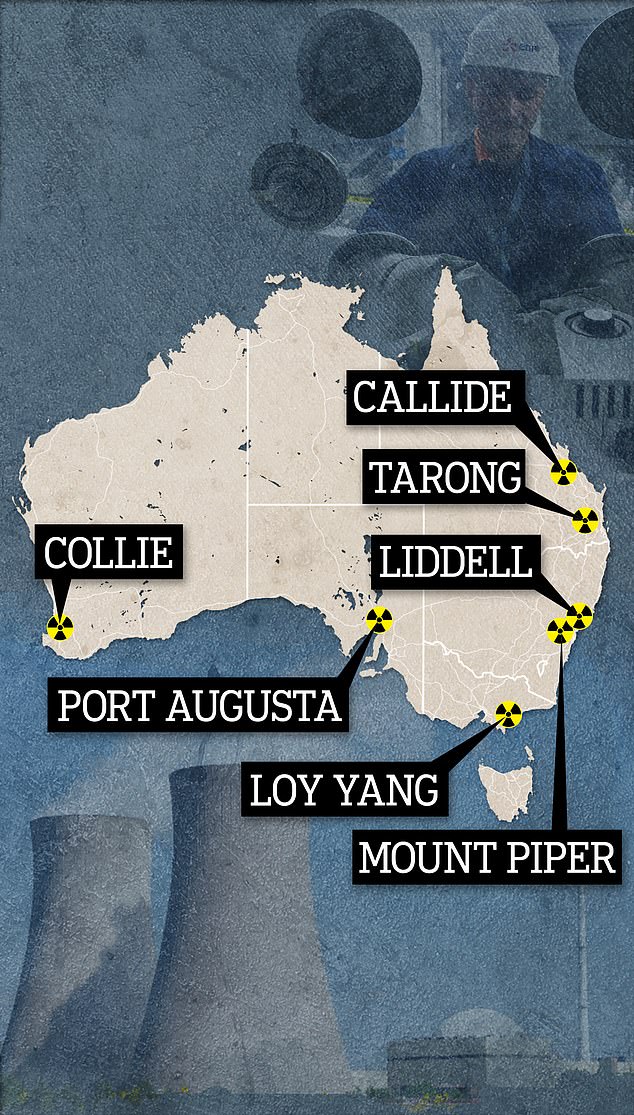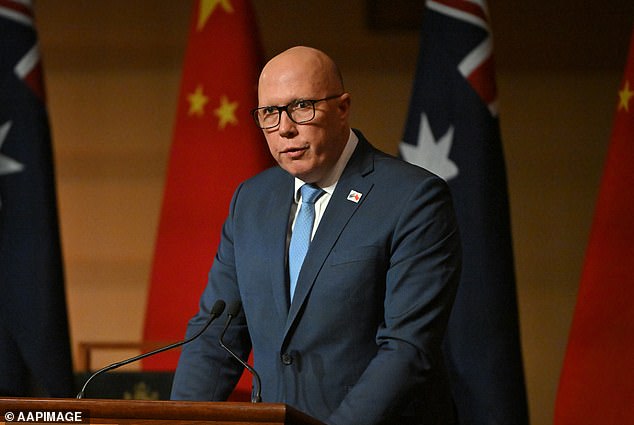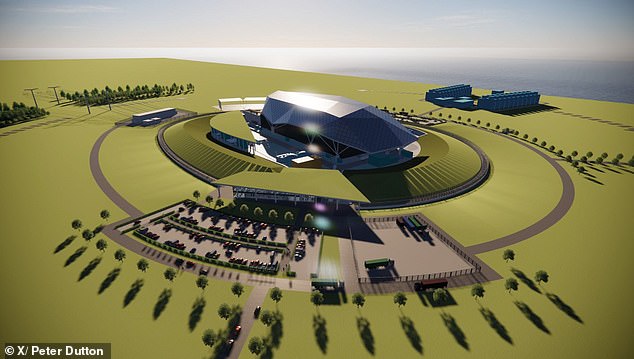Why Dick Smith is backing Peter Dutton’s nuclear energy plan – as he makes stunning prediction about Anthony Albanese’s anti-nuke stance
Entrepreneur Dick Smith has backed Peter Dutton’s plan to build the first of seven nuclear reactors in just over a decade, describing it as good leadership.
The 80-year-old philanthropist and adventurer has compared the opposition leader’s plan to have nuclear power in Australia by 2035 to former Liberal Prime Minister John Howard’s successful 1998 GST re-election campaign.
“I’ve never used the word risk at all, I think it’s just leadership,” he told Daily Mail Australia from the remote Birdsville Track in South Australia.
“It will be similar to John Howard’s successful GST submission, that’s what I compare it to and that’s why I think Peter Dutton is showing really good leadership.”
The Liberal Party leader is proposing to have Australia’s first nuclear reactor by 2035 and a second in operation by 2037, and has announced seven possible sites in every mainland state.
Mr Smith predicted that the ALP would come to support nuclear energy at federal and state levels – arguing that Prime Minister Anthony Albanese was now backing nuclear submarines as part of the AUKUS deal.
Entrepreneur Dick Smith (pictured left with wife Pip) supports Peter Dutton’s plan to build seven nuclear reactors in just over ten years – and describes it as good leadership

Tarong and Callide in Queensland, Liddell and Mount Piper in NSW, Port Augusta in South Australia, Loy Yang in Victoria and Muja in Western Australia are marked as the locations for the stations
‘I think Labor will be on the sidelines. I am absolutely certain they will, just as they stood on the side of the nuclear submarines,” Smith said.
‘Eventually it will be identical to nuclear energy; it’s the only way you can move forward.’
Tarong and Callide in Queensland, Liddell and Mount Piper in NSW, Port Augusta in South Australia, Loy Yang in Victoria and Muja in Western Australia have been marked as the locations for the stations.
The Labor governments in Queensland, New South Wales and Victoria have laws blocking nuclear power, but Mr Smith predicts they will eventually legislate to overturn these bans as they realize renewable energy is unreliable.
“They will be convinced because there is simply no alternative,” Smith said.
‘There will be power outages – you can’t run a country on intermittent solar and wind power; it’s impossible.
“I understand that every state has a ban on nuclear energy, and we also have a federal ban on nuclear energy, so those bans are going to have to be lifted.
“We’re one of the biggest sellers of uranium in the world, but we have legislation that says you can’t even think about that, and that’s completely ridiculous.
“We’re going to have to change the law in every state and federally.”
Mr Smith said that while it makes sense to convert coal-fired power stations to nuclear reactors, it could take longer to establish a nuclear power industry.
“I think it could take 10 to 15 years,” he said.
‘The best thing we can do is without a doubt put the nuclear power stations where the existing coal-fired power stations are. In fact, instead of generating energy, all we’re doing is burning coal to heat water, using uranium to heat water.
‘If we switch to nuclear energy, you will need much less additional electricity lines.’

The 80-year-old philanthropist and adventurer has compared the federal opposition leader’s (pictured) plan to have nuclear power in Australia by 2037 to former Liberal Prime Minister John Howard’s successful 1998 GST re-election campaign.
The United Arab Emirates established a nuclear reactor in Barakah in 2020 after eight years of construction work using South Korean technology.
Mr Dutton on Wednesday tweeted an image of a Rolls-Royce concept for a small nuclear reactor.
But no country in the world has yet operated small modular reactors that produce 300 megawatts, or 300 million watts, of energy.
Canada is not expected to have this technology until the late 2020s, when Ontario’s state energy company installs a reactor designed by General Electric and Hitachi.
Mr Smith said larger scale reactors were probably more likely.
“I’m not suggesting that we’re going to have small modular reactors – my suggestion would be that we just follow something like Barakah’s in the United Arab Emirates and let the South Koreans build it, they’re experts,” he said. said.
Labor and the Greens want Australia to get 82 percent of its energy from renewables by 2030, but Mr Smith predicted there would be more community resistance to wind turbines.
“I think you will find that the majority of the population in this country will be sensible and will become outspoken proponents of nuclear energy. We don’t want this incredible environmental destruction that is happening because of these wind farms.

Mr Dutton on Wednesday tweeted an image of a Rolls-Royce concept for a small nuclear reactor. But no country in the world has yet operated small modular reactors producing 300 megawatts, or 300 million watts of power.
‘A nuclear power plant probably means 2,000 fewer wind turbines, so all those people will support nuclear energy.
‘The wind farms are erratic and unpredictable, so you could never run a country, especially now that Anthony Albanese says we are going to industrialize more and make things like solar cells. You need an incredible amount of energy and that is not possible without nuclear energy.’
Australia banned nuclear power in 1998 after the Howard government agreed to a Greens amendment to gain support for a new nuclear medicine research reactor at Lucas Heights in Sydney’s south.
When it came to nuclear waste storage, Mr Smith suggested the Olympic Dam in South Australia, which is also a known uranium storage site.
“I’ve been to the mine at Olympic Dam – there are huge, big cavities where we extracted uranium, that’s where we have to store the waste,” he said.
Mr Smith was unsure whether Mr Dutton would win the next election with a nuclear energy policy.
“I don’t know, I think he will be a good prime minister,” he said.
‘I think we have a good Prime Minister now and I hope that Labor will change its position and support nuclear energy before the next election.’
Both parties in politics have committed to a climate target of zero in 2050.
